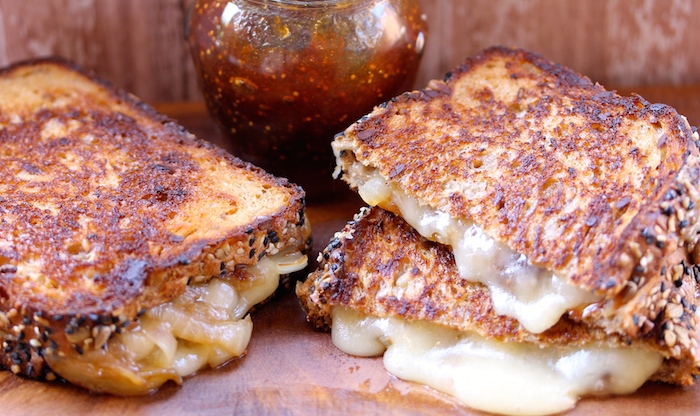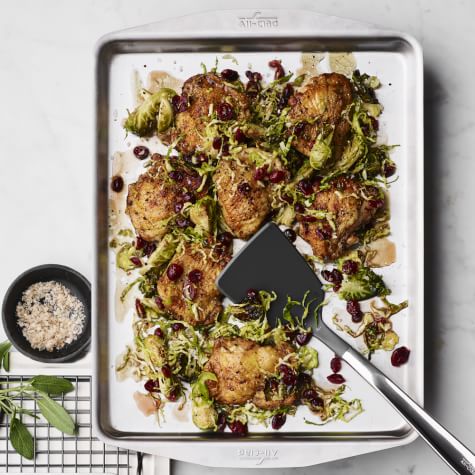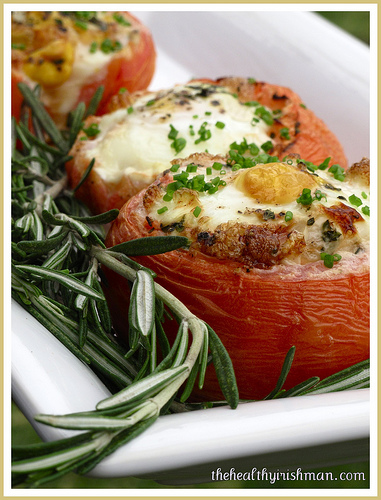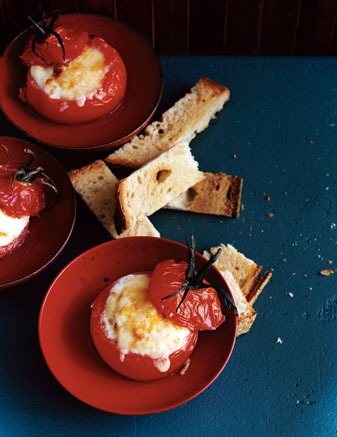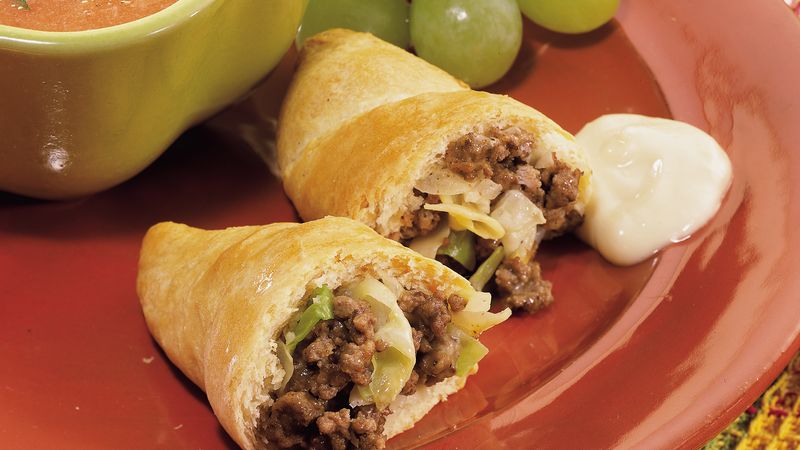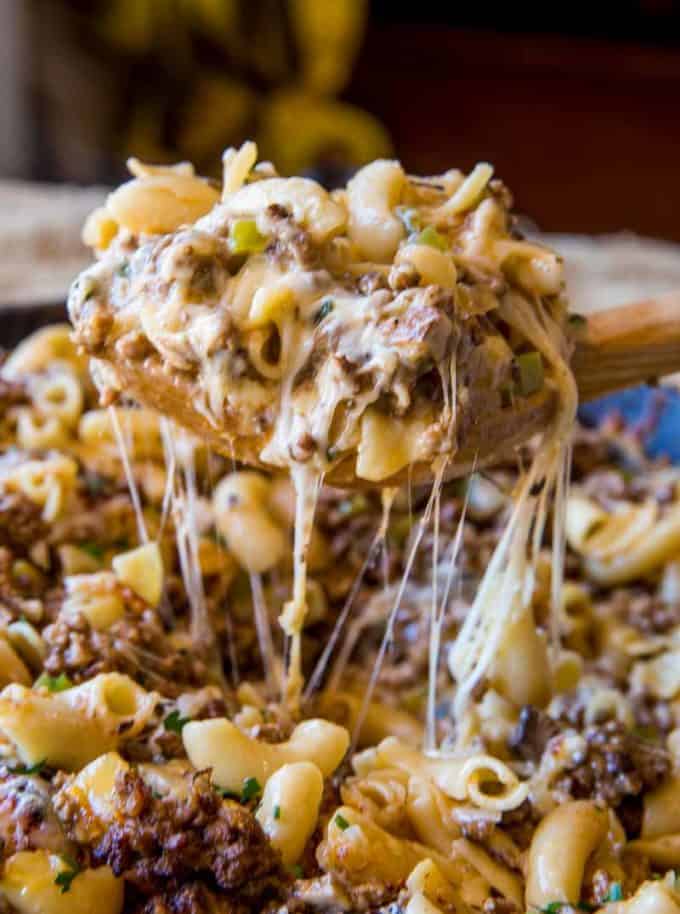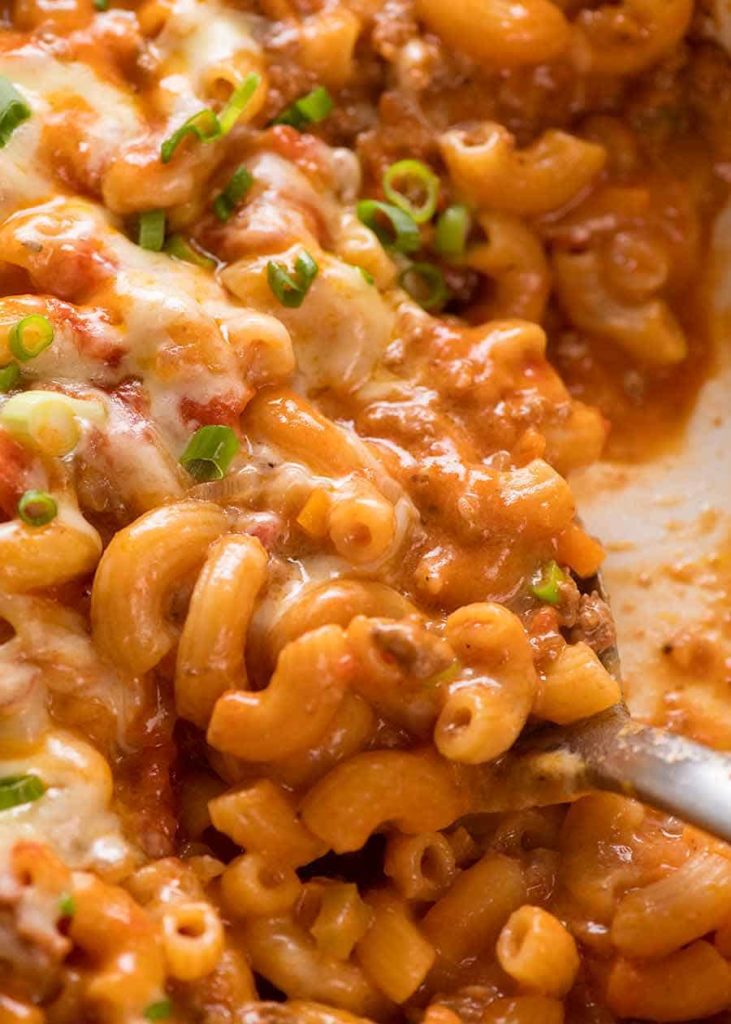Herb Seasoned Grain-Free Stuffing
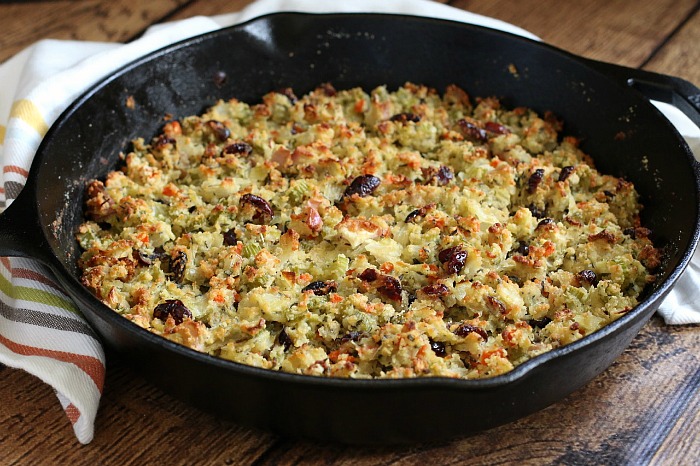
3 T. ghee or butter
3 C. fine diced sweet onion
2 C. finely sliced celery
1/2 C. fine diced carrots
1 medium apple, diced
1/4 C. dried cranberries
1 T. (heaping) minced fresh sage
2 tsp. dried thyme
1/2 tsp. each of dried rosemary, garlic powder, sea salt and pepper
1 large egg, plus 1 egg white
2 C. blanched almond flour
Preheat oven to 350ºF. Melt ghee in a large cast-iron skillet over medium heat. (If you don’t have a cast iron skillet, see recipe note below.) Add the onion, celery, carrots, apple, cranberries, and seasonings.
Sauté mixture until veggies soften, about 6-8 minutes. Meanwhile, in a small bowl, add the egg, egg white and one tablespoon of water. Whisk well until slightly frothy. Set aside. When veggies begin to soften, remove skillet from heat and stir in the blanched almond flour; mixing well to combine. Drizzle the whisked eggs over the top of the stuffing, using a fork to gently stir in the eggs and fluff the mixture. (Fluffing the stuffing, rather than smoothing out the top, helps to create browned bits that add a tasty texture and depth of flavor.) Bake stuffing approximately 50 minutes, until top is golden brown.
Recipe Variation: For a delicious one-skillet meal, reduce blanched almond flour to 1 C.. After stirring in the almond flour, add 1 C. of leftover shredded roast chicken (or diced grilled chicken), and stir well to combine. Add the eggs as directed in step 6 and bake approximately 40-50 minutes, until golden brown. Makes 2-3 servings.
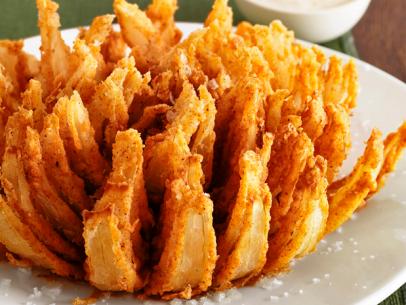
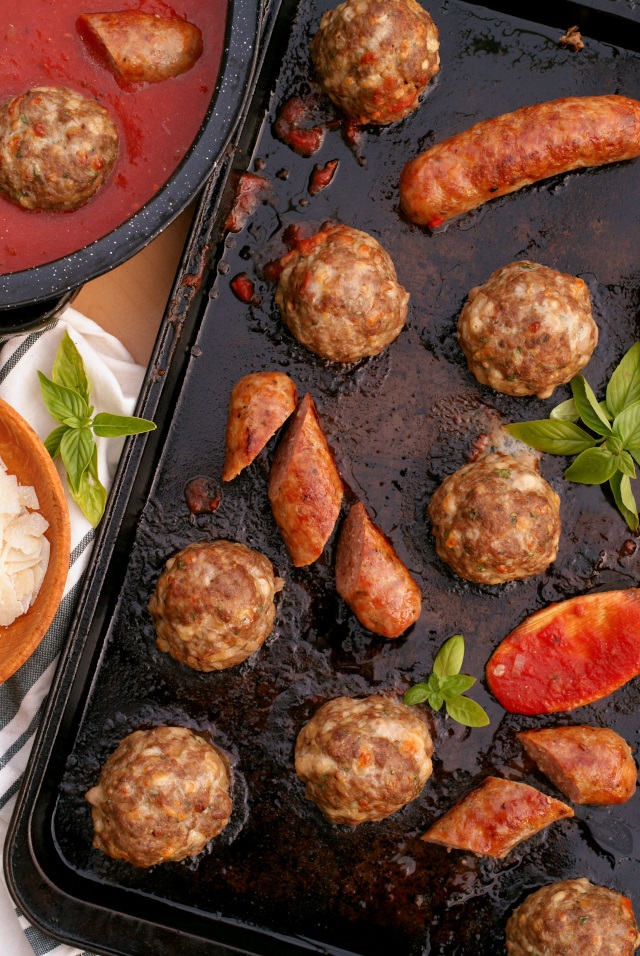
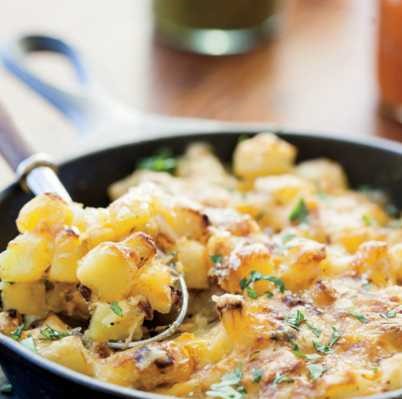
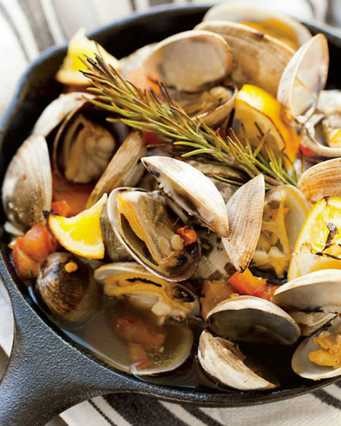
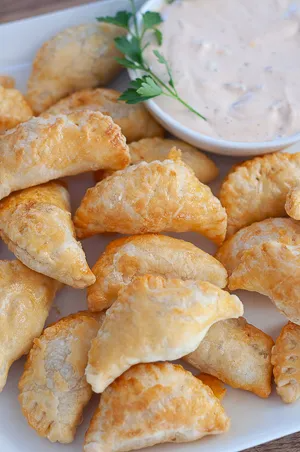 1/2 lb. ground beef
1/2 lb. ground beef
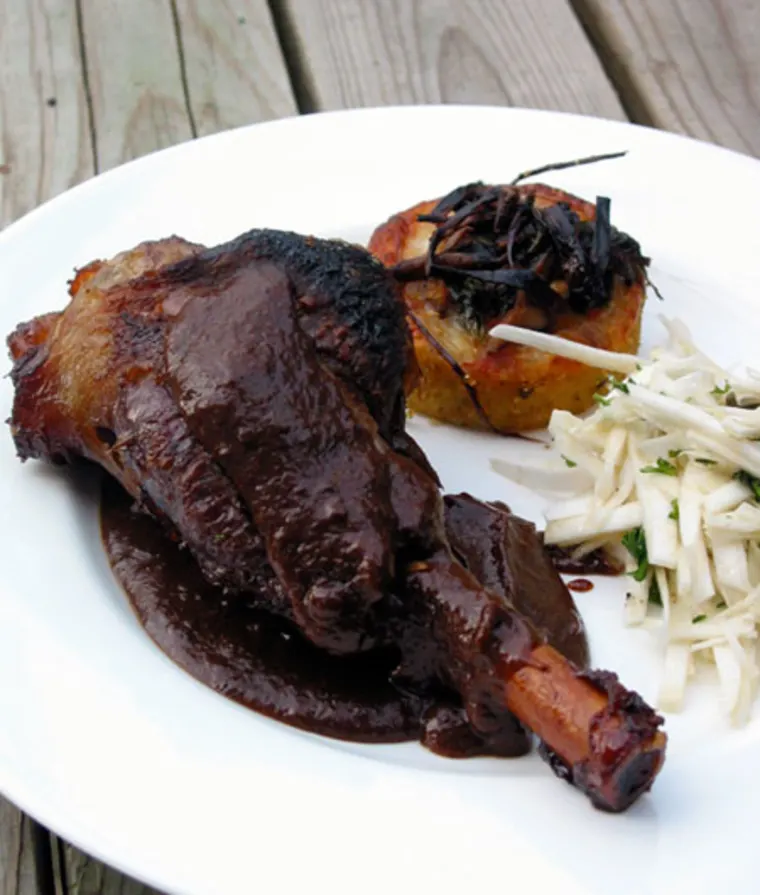

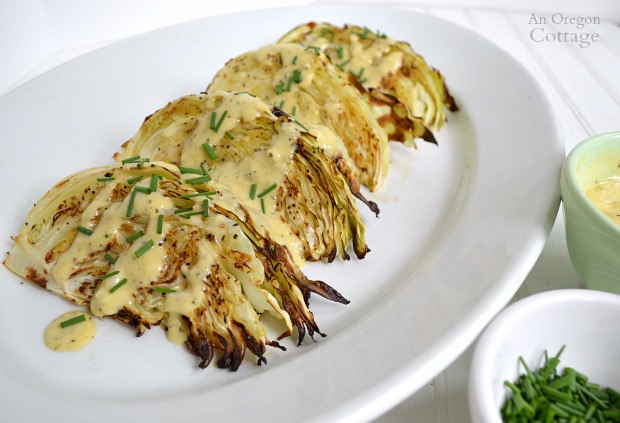
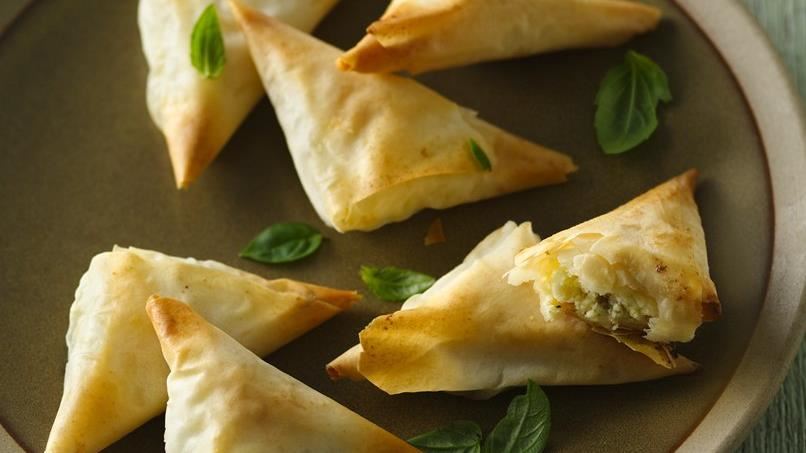
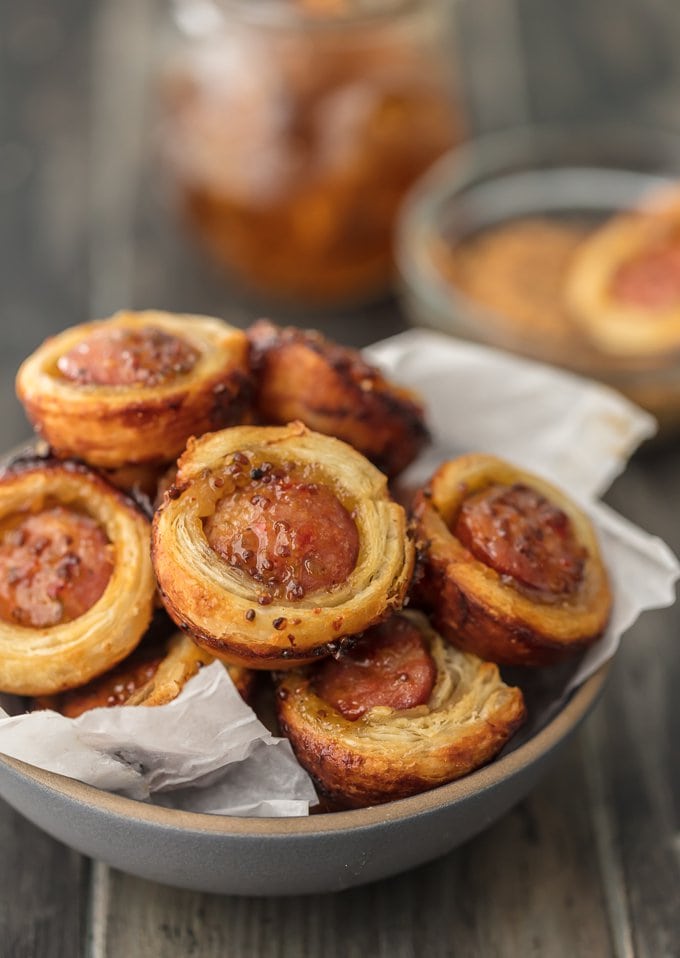
 Pantry Friendly Garlicy Lumberjack Macaroni
Pantry Friendly Garlicy Lumberjack Macaroni